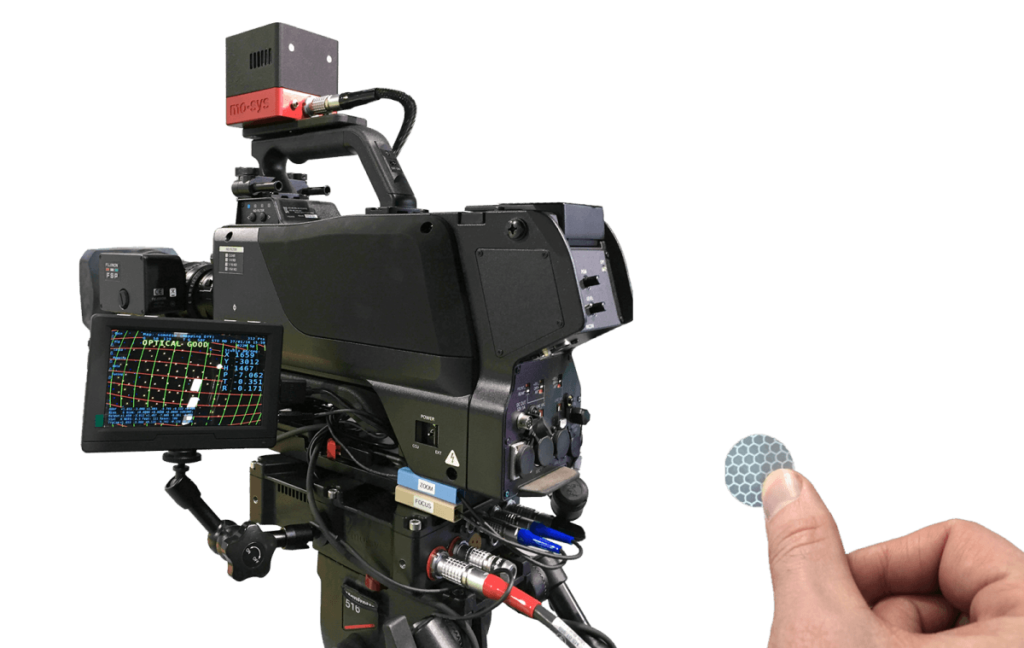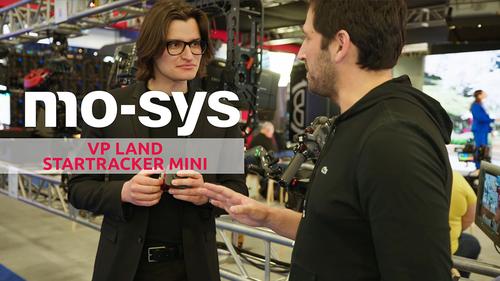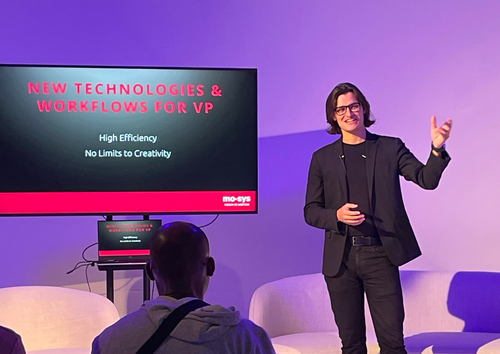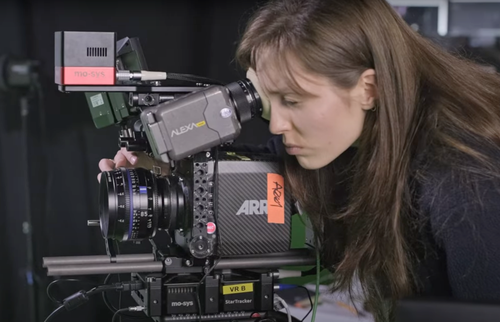A beginner's guide to optical and mechanical tracking
It can be difficult to determine which type of tracking system would be best suited to your production if you do not understand the difference between various types of tracking systems. In this article, we compare the most popular types of tracking systems deployed across the broadcast industry for augmented reality graphics and virtual studios. In particular we'll be looking at mechanical and optical tracking systems and we will try to give you a few beginner guidelines to bear in mind.
Mechanical tracking systems
Mechanical tracking systems are based around the use of measuring sensors or encoders attached to a crane, camera heads or pedestals. These encoders will give angular and positional measurements that allow an operator to accurately track the position of the camera.
Usually used for live sports coverage or outdoor broadcasting, mechanical systems are robust, reliable and are equipped with the capability to offer fine, high-resolution accuracy. A mechanical tracking system such as our e-Crane or the Jimmy Jib Tracking kit can offer resolutions of more than 1,000,000 ticks per 360º turn, meaning there is little or no tracking noise at all. This is perfect for AR graphics when broadcasting live in UHD.
Red Bull Air Race 2015: V70 Head with Mo-Sys Bolt on Tracking
These systems do however require regular homing and alignment as they tend to drift over long periods of time; homing ensures the camera is relatively aligned to the virtual or augmented graphics. This happens because incremental or relative encoders have no awareness of their absolute position when switched off and on again. Each axis must be manually homed from 0º to the correct angle on every use. Naturally, this can be a source of frustration for camera operators and can take up a lot of time on-set.
Backlash can also become a problem when using mechanical tracking. It is especially noticeable when changing the direction of the camera, hence why camera operators tend to deploy slow panning movements with minimal tilt. With this method operators can avoid backlash which causes the graphics to drift.
It is possible to use a mechanical tracking system with relative encoders for lens data, but it is very important to mount the encoders securely to avoid backlash and slipping.
Having said this, once you have aligned and homed a mechanical tracking system and it is used in an appropriately cautious way, then this method can be one of the most robust and reliable ways to track cameras for live broadcast.
Optical tracking systems
Where mechanical tracking are restricted in terms of base-movement, optical tracking systems such as StarTracker truly excel, offering a greater level of freedom of movement across an entire studio. Below, we focus on three major varieties of optical tracking systems: Outside-in tracking, and two inside-out systems, free-d and Mo-Sys StarTracker.
Outside-in
Outside-in tracking uses a ring of camera sensors to create a sweet spot for tracking. This sweet spot is the only area able to be tracked and, due to the nature of the sweet spot only occurring in a specific area, it is not possible to achieve any wall-to-wall tracking with this method.
Outside-in tracking is restrictive and requires a tracking specialist on-site to assist with the calibration. It is however an absolute tracking technology, which means that no drift will occur and once set up, it will be ready to use for a prolonged period of time.
As expected, outside-in tracking is an expensive technology, with the price increasing in-line with the area that needs to be tracked as more camera sensors are needed. Plus, while these systems require little calibration while in operation, they require time-intensive recalibration every time they are set up.
Inside-Out: free-d
Developed by the BBC in 1996, the free-d optical camera tracking system was the first absolute optical tracking systems for AR and virtual studio application. Ahead of its time, free-d was ground-breaking and very successful, and until recently it was still available as free-d2 from Shotoku.
Unlike outside-in systems, free-d used a single camera mounted on a broadcast camera to track circular barcode fiducials on the ceiling. These circular barcode fiducials enabled the centre to be found from any angle, reporting all six degrees of the camera position and therefore enabling more freedom than before.

However, by modern standards free-d required a fairly complex set up with each unique barcoded target needing to be mounted on rigid metal poles and plates suspended from the ceiling. Whilst only 5 targets were needed to be seen for 1mm-level tracking, the relatively large size of each target meant the density of targets had to be relatively high to assure visibility given occlusion from ceiling lights. This made repositioning lights more complicated and potentially required a degree of recalibration if some targets were knocked out of position. In addition, the limited computing power available at the time resulted in having to create custom processing hardware, which in turn made it difficult to further develop the
free-d system.
Inside-Out: StarTracker

nstead of the coded fiducials used by the free-D system, the Mo-Sys StarTracker technology is an inside out system which uses a constellation of small, identical retro-reflective markers (‘stars’) which are not encoded. A small LED sensor, mounted on the studio camera, shines light on the stars. This defines the star map, which allows the StarTracker processor unit to report the position and orientation of the studio camera in real time to the rendering engine.
The main appeal of StarTracker is its ease of use and freedom of movement. It is an absolute tracking system with the ability to track any space from wall-to-wall that can be set up and used entirely by the cameraman. It is also far cheaper than any complex outside-in tracking. Another appeal of StarTracker is that the area of tracking can be increased by simply putting up more stickers.
To date, StarTracker powers more than 100 broadcast studios across the world. The biggest broadcasters often choose StarTracker as it does not require a tracking operator. Once it is set up, it just tracks and maintenance is minimal.
Which tracking is most suitable for you?
Determining whether mechanical or optical tracking systems are better for you will depend on the situation that you face. An optical tracking system will give you more freedom and is absolute, meaning that it is free to use with minor homing following the initial set up and calibration. Mechanical tracking, on the other hand, is usually more complex and requires regular homing but whilst in use it is a robust, solid option for tracking.
When tracking outdoors, many studios will opt for mechanical over optical tracking due to the difficulty in placing optical markers outside. Marker-less optical tracking systems which use natural markers outdoors are currently available but are heavily affected by changing lighting.
For ease of use and reasonable pricing, optical tracking systems like StarTracker may be most suited to your in-studio production.
If you need more assistance in determining which kind of tracking system would be best for your situation get in touch with Mo-Sys today.




